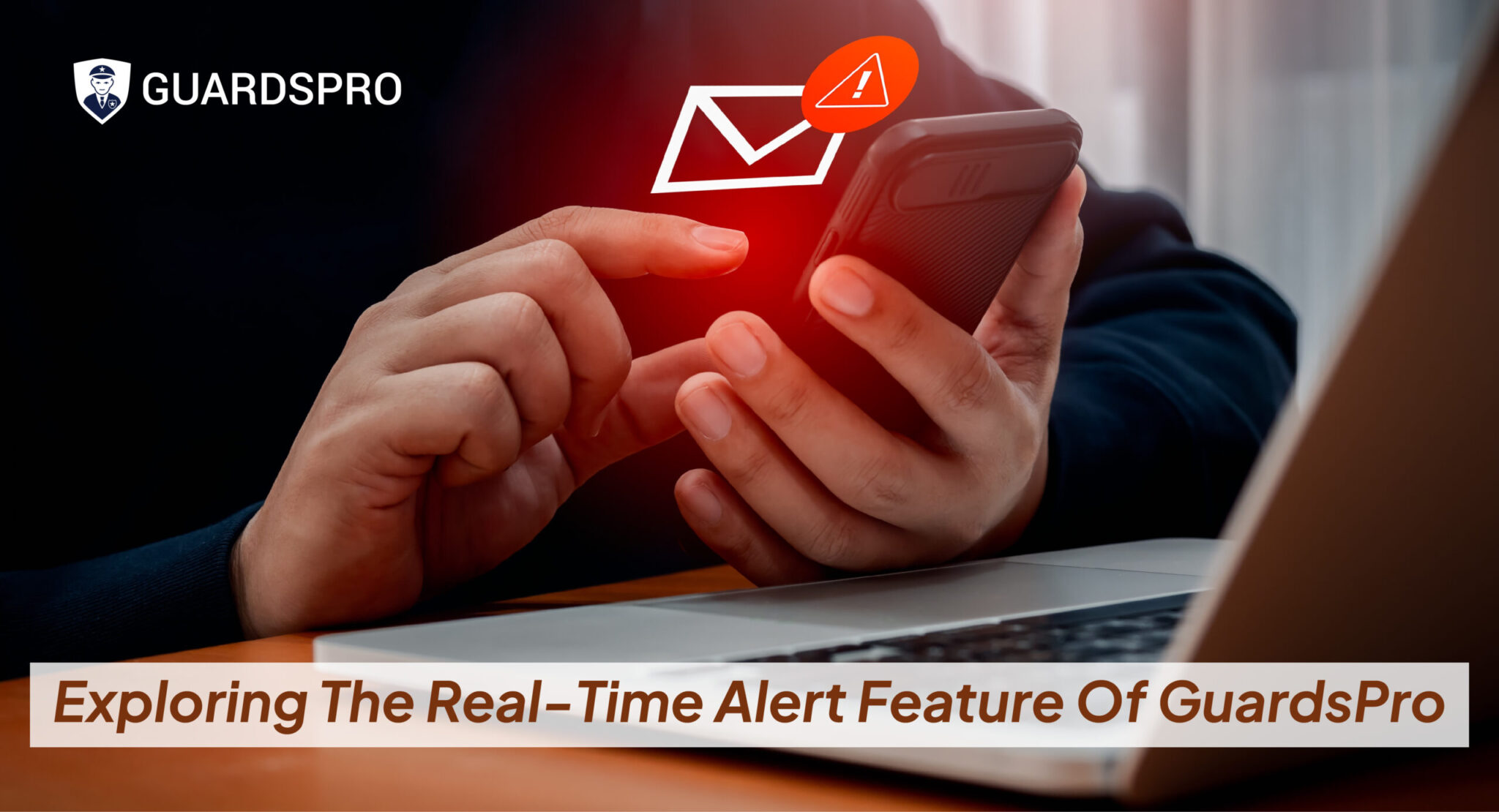Knowledge is powerful. In security management, relaying accurate and timely information in real-time is crucial because time is of the essence. From incident detection to rapid response, situational awareness, and efficient communication, real-time alerts and notifications play a significant role in security.
GuardsPro’s leading security guard management software offers a real-time alert/notification feature that empowers organizations to detect and respond to security incidents promptly and stay on top of every task and activity happening on-site. This blog delves into the significance of this feature, explores customization options, shares best practices for setting up alerts, and highlights its impact.
Customization Options For Real-Time Alerts
One of the key strengths of GuardsPro’s real-time alert feature is its high degree of customization, allowing organizations to tailor alerts to their specific needs and security protocols. Customization options include:
Alert Triggers
Users can define specific events or conditions that trigger alerts, such as unauthorized access, motion detection, or system malfunctions. This ensures only relevant incidents generate alerts, reducing unnecessary distractions.
Notification Channels
GuardsPro supports multiple notification channels, including SMS, email, and push notifications. Organizations can choose the most effective channels for their teams to ensure prompt awareness and response.
Priority Levels
Alerts can be categorized by priority levels, enabling security teams to differentiate between critical incidents and lower-priority events. This prioritization helps in allocating resources efficiently.
Role-Based Alerts
Alerts can be tailored based on the roles and responsibilities of different team members. For example, technical issues might be directed to IT staff, while security breaches go directly to on-site security personnel.
Specialized Alerts
Panic Alerts
Panic alerts provide an immediate way for individuals to signal distress or danger. When activated, they send an instant notification to security personnel, promoting a rapid response. These alerts are crucial in environments such as schools, hospitals, and workplaces where quick summoning of help can prevent or mitigate harm. Integrating panic buttons into security systems ensures that help is always just a button press away.
Check-In/Out Notifications
Check-in/out notifications help track the movements of individuals within a facility. These notifications can verify when employees, visitors, or contractors enter and leave specific areas, ensuring that only authorized personnel are present in sensitive areas. This system enhances security by maintaining an up-to-date log of who is on the premises, which is particularly useful in high-security environments like data centers or research labs.
Detailed Reports
Automated reports generated from real-time alerts provide valuable insights into security incidents and trends. These reports can include data on the frequency and types of alerts, response times, and outcomes. Detailed reporting helps organizations analyze past incidents to improve future responses, ensuring continuous improvement in their security protocols. Regularly reviewing these reports supports compliance and accountability efforts.
Geofence Alerts
Geofence alerts trigger notifications when a person or asset enters or exits a predefined geographic boundary. This technology is particularly useful for monitoring the movement of valuable assets or ensuring that individuals remain within designated safe zones. For example, in logistics, geofence alerts can track the movements of trucks, ensuring they follow prescribed routes and timelines. In a campus setting, these alerts can ensure students remain within safe boundaries.
Conclusion
Real-time alerts are cornerstones of effective security management. They not only ensure immediate detection and response to incidents but also enhance situational awareness, proactive risk management, compliance, and operational efficiency. By leveraging specialized alerts like panic alerts, check-in/out notifications, detailed reports, and geofence alerts, organizations can further amplify the benefits of real-time monitoring, creating robust and dynamic security infrastructure

